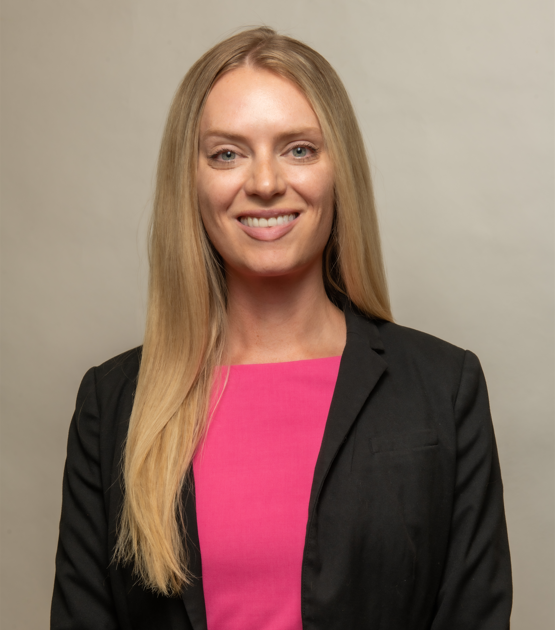CERC News
Featured Story
We are pleased to share that Ms. Katy Larson will be joining California State University, Bakersfield as the new Director of the California Energy Research Center (CERC), effective July 2025.
Katy brings over 15 years of energy industry experience to CSUB and is a dynamic, thoughtful energy program manager with a track record of success across multiple disciplines and major capital infrastructure projects. Her background includes expertise in carbon sequestration, oil and gas, gas storage, water sustainability, hydropower, and civil infrastructure. Katy’s broad industry experience and forward-looking approach will be instrumental in advancing CERC’s role as a regional and statewide leader in applied energy research and innovation.
Most recently, Katy served as the Geoscience Compliance Manager at Tallgrass Energy, where she built and led a Carbon Sequestration Compliance and Permitting program. Her leadership resulted in the successful permitting of six Wyoming carbon sequestration projects—from feasibility through permit issuance—including one achieving Authorization to Inject. She also managed key initiatives in New Mexico and Nebraska, including a Department of Energy-funded project in collaboration with New Mexico Tech.
Before her time at Tallgrass, Katy held leadership roles at Battelle Memorial Institute, where she guided carbon sequestration feasibility studies and federal grant applications, and at California Resources Corporation (formerly Occidental Petroleum), where she contributed to over 70 field operations across California and participated in early carbon sequestration efforts. Her earlier roles at Stone Energy and Schlumberger WesternGeco further strengthened her multidisciplinary foundation in geology and geophysics.
Katy earned her Master of Science in Geology from the University of Louisiana at Lafayette—where she was recognized as the most outstanding graduate student—and holds a Bachelor of Science in Geology from Louisiana State University. Beyond her industry experience, she is deeply committed to STEM education and leadership. She facilitated internship for students and served on several local and international boards and programs.

Press Release
Carbon TerraVault's California DAC Hub Consortium Selected for U.S. DOE Funding to Bring Direct Air Capture and Storage to the Golden State
LONG BEACH, Calif. -- (BUSINESS WIRE) -- Carbon TerraVault Holdings, LLC (CTV), a subsidiary of California Resources Corporation (NYSE: CRC), today announced that the California Direct Air Capture (DAC) Hub has been selected to receive $11.8 million in funding from the U.S. Department of Energy (DOE) under its Regional DAC Hubs Initiative related to the proposed development of California's first full-scale DAC plus storage (DAC+S) network of regional hubs. DAC+S is a solution that is intended to remove and then permanently store atmospheric carbon dioxide (CO2) using low carbon emission energy and provide economic benefits to surrounding communities. This first DOE amount will be used to perform Front End Engineering Design (FEED) studies in 2024 on the proposed DAC facilities in Kern County, followed up with additional funding requests and planned development and construction potentially beginning in 2025. With selection for the DOE funding, the California DAC Hub is also eligible for additional funding from the California Energy Commission.
Other News
Visiting scientist calls for urgency on carbon removal: Article by John Cox of The Bakersfield Californian; April 9, 2025
CRC Energy Transition Lecture led by Bill Bartling featured in The Bakersfield Californian: Article by John Cox of The Bakersfield Californian; Oct. 30, 2024
CERC hosts third Carbon Management and Energy Innovation Technical Symposium: Around 180 experts gathered for annual event; April 24, 2024
CERC to host third Carbon Management and Energy Innovation Symposium: Experts will gather to discuss challenges, opportunities; April 10, 2024
CSUB students doing research with world's best: Hard to grasp magnitude’ of work with Lawrence Livermore National Laboratory scientists; Aug. 9, 2023
Journalists from Central Asia visit CSUB to learn about energy: CSUB hosts nine foreign journalists, coming from Kazakhstan, Kyrgyzstan, Tajikistan, Turkmenistan and Uzbekista; June 20, 2023
Experts discuss carbon management at CSUB symposium: Industry, science and policy stakeholders talk challenges, opportunities; April 25, 2023
CSUB federal award a 'breakthrough' for energy research: DOE funds also will recruit under-represented groups to the geosciences; Dec. 15, 2022
State budget supports CSUB's Energy Innovation Center: $83 million allocation will help university reimagine future of energy; June 27, 2022
Symposium highlights local opportunities, challenges of carbon storage: Article by John Cox of The Bakersfield Californian; April 29, 2022
Carbon Sequestration Symposium brings energy experts to CSUB: CERC event will be live-streamed April 29; April 15, 2022
CSUB professor makes the Belgian news: Dr. Saeed Jafarzadeh spoke to international journalists on solar energy in Kern County; Nov. 9, 2021
Researching sustainable waste treatments and entrepreneurship: Drs. Luis Cabrales, Zhongzhe Liu and Jeremy Woods are working together on a USDA grant-funded collaborative study with UC Riverside; Sept. 29, 2021
Transforming knowledge into experience: Professors in CSUB's College of Natural Sciences, Mathematics and Engineering led students in research projects for the first year of the Summer Undergraduate Research Experience (SURE); Aug. 18, 2021
Research spotlight: Dr. Tat Acharya: Dr. Acharya was asked to talk about his research on sustainable energy; July 26, 2021
UCTV Carbon Dioxide at Scale UCTV Carbon Capture and Storage: the What, Why and When